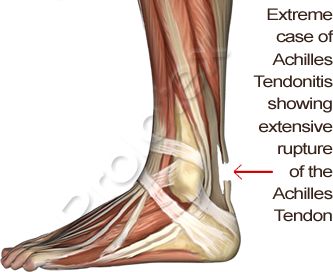Plantar Fasciitis Braces in Cheung Kwan O HKSAR
Podiatrists for Plantar Fasciitis Treatment in Cheung Kwan O HKSAR, China

Achilles Tendinopathy. Treatment And Information Over two years ago, I started composing short articles for the Injury Series with the goal of revealing scientifically-validated methods to treat and prevent the most typical running injuries. I read that it might not be a smart idea to heel drops before runs as this might overly stress the tendon (and I presume on non-running days it's OK to do the heel drops at any time?). The eccentric workouts are believed to selectively harm the Achilles tendon, stripping away the misaligned tendon fibers and permitting the body to lay down new fibers that are better in positioning to the healthy collagen in the tendon. I have actually attempted everything without success: eccentrics for months, physical therapy ART, nitro, kineso tapping, overall rest, heel lifts. It is also often associated with a modification from running in a thick heeled shoe to a thin heeled shoe, such as going from training shoes to racing flats and/or racing spikes in cross-country and/or track. The strength procedure includes 2 exercises: a straight-kneed and a bent-kneed eccentric heel drop. Treatment for moderate Achilles tendon problems consists of rest, non-prescription discomfort medicine, and extending exercises. It can take numerous weeks and even months for the tendon to recover depending upon the severity of the injury to the tendon. Orthotics do not reliably change pronation, and even if they do, it's uncertain as to whether this will increase or reduce stress on the Achilles. It is likewise typical in pregnant women and anybody who is bring excess weight due to the fact that this enhances the load on the feet, enhancing the stress on the plantar fascia. Hi there Guys, I've had huge issues with both achilles for a variety of months now (mid-point). If the professional athlete over pronates when running then this can trigger the foot to flatten which in turn triggers the lower leg to rotate inwards which twists the achilles tendon increase the tensions on it making it more prone for over use. For persistent cases where tendinosis is noticeable and other methods of treatment have failed, surgery may be ad good idea to get rid of and fix the harmed tissue. I've just recently bought a pair of Newtons and I like them a lot (do not have to consider mid-foot strike as they nearly require you to mid-foot anyhow), however they don't seem to be assisting me any longer than my previous shoes (Saucony Kinvara's). Usage warm water to warm up the tendon prior to you run, and use ice afterwards, even once you've started feeling better. During the physical examination, the podiatrist will feel and push gently around the Achilles tendon to see if it hurts or has any abnormalities in its surface area. A hurt individual experiences severe trouble with pushing off the foot and even walking. It connects your heel to the two muscles of your calf and helps your foot push forward each time you take a step. Achilles tendinitis is a swelling (swelling) of the tendon, which normally takes place as an outcome of overuse injury. A lot of cases of Achilles tendonitis will get better by themselves with rest and minor treatment. I saw in the comments that the more people wore their minimalist shoes or barefoot the more it improved. The most common type of injury to the Achilles Tendon is called Achilles Tendonitis, which is an inflammatory condition causing discomfort in the Achilles tendon. Treatment for severe issues, such as a torn or ruptured tendon, may consist of surgical treatment or a cast, splint, brace, strolling boot, or other device that keeps the lower leg from moving. The term Achilles tendinopathy is most likely a better term to describe the variety of conditions that can trigger Achilles tendon discomfort. This refers to tiny tears (microtears) in the tissue in and around the tendon triggered by overuse.
Heel Pain Doctors and Surgery in Hong Kong
Previous Plantar Fasciitis Brace Next Plantar Fasciitis Brace Supplier
Plantar Fasciitis Braces Around Hong Kong
Plantar Fasciitis Braces in A Kung Tin HKSAR
Plantar Fasciitis Braces in Che Keng Tuk HKSAR
Plantar Fasciitis Braces in Cha Kwo Ling HKSAR
Plantar Fasciitis Braces in Au Ha HKSAR
Plantar Fasciitis Braces in Cheung Kang HKSAR
Plantar Fasciitis Braces in A Kung Ngam HKSAR